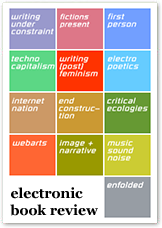Related Research Articles

De Stijl was a Dutch art movement founded in 1917 by a group of artists and architects based in Leiden, Voorburg and Laren.

Neoplasticism, originating from the Dutch Nieuwe Beelding, is an avant-garde art theory proposed by Piet Mondrian in 1917 and initially employed by the De Stijl art movement. The most notable proponents of this theory were Mondrian and another Dutch artist, Theo van Doesburg. Neoplasticism advocated for a purified abstract art, by applying a set of elementary art principles. Thus, a painting that adhered to neoplastic art theory would typically consist of a balanced composition of simple geometric shapes, right-angled relationships and primary colors.

Piet Zwart was a Dutch photographer, typographer, and industrial designer.

Vilmos Huszár was a Hungarian painter and designer. He lived in The Netherlands, where he was one of the founding members of the art movement De Stijl.

Gerd Arntz was a German Modernist artist renowned for his black and white woodcuts. A core member of the Cologne Progressives, he was also a council communist. The Cologne Progressives participated in the revolutionary unions AAUD (KAPD) and its offshoot the AAUE in the 1920s. In 1928 Arntz contributed prints to the AAUE paper Die Proletarische Revolution, calling for workers to abandon parliament and form and participate in worker's councils. These woodcut prints feature recurring themes of class.

Geert Paul Hendrikus Schuitema was a Dutch graphic artist. He also designed furniture and expositions and worked as photographer, film director, and painter, and as a teacher of 'publicity design' at the Royal Academy of Art in The Hague.

The International Typographic Style is a systemic approach to graphic design that emerged during the 1930s–1950s but continued to develop internationally. It is considered the basis of the Swiss style. It expanded on and formalized the modernist typographic innovations of the 1920s that emerged in part out of art movements such as Constructivism (Russia), De Stijl and at the Bauhaus (Germany). The International Typographic Style has had profound influence on graphic design as a part of the modernist movement, impacting many design-related fields including architecture and art. It emphasizes simplicity, clarity, readability, and objectivity. Hallmarks of the style are asymmetric layouts, use of a grid, sans-serif typefaces like Akzidenz Grotesk and Helvetica, and flush left, ragged right text. The style is also associated with a preference for photography in place of illustrations or drawings. Many of the early International Typographic Style works featured typography as a primary design element in addition to its use in text, and it is for this that the style is named. The influences of this graphic movement can still be seen in design strategy and theory to this day.
Leonard van Munster is a Dutch contemporary artist making Site-specific and Subject-specific work. He studied from 1992 to 1996 at the Gerrit Rietveld Academy in Amsterdam. This included an exchange programme to Parsons School of Art and Cooper Union in New York.
Nigel Holmes is a British/American graphic designer, author, and theorist, who focuses on information graphics and information design.
Philip Baxter Meggs was an American graphic designer, professor, historian and author of books on graphic design. His book History of Graphic Design is a definitive, standard read for the study of graphic design.

Eye magazine is a quarterly print magazine on graphic design and visual culture.

Gerard Unger was a Dutch graphic and type designer. He studied at the Gerrit Rietveld Academie in Amsterdam from 1963 to 1967, and subsequently worked at Total Design, Prad and Joh. Enschedé. In 1975, he established himself as an independent developer. A long-time guest lecturer at the University of Reading, he mentored many modern typeface designers. He lived and worked in Bussum, Netherlands.
Imogen Theresa Stidworthy is a British multimedia artist based in Liverpool.
The Piet Zwart Institute is a post-graduate institute for study and research in art, media and design based in Rotterdam, Netherlands. Named in memory of the Dutch designer Piet Zwart, it was inaugurated in 2001. The current postgraduate study program structure had been introduced earlier in 1999.

The Stedelijk Museum Breda, formerly the Museum of the Image (MOTI), is a national museum for visual culture in Breda in the Netherlands. The museum focuses on film, design, photography, fashion, visual arts, architecture, science, and gaming.
Erik Adigard des Gautries, is a Congolese-born French and American communication designer, multimedia artist, and educator. He is based in the San Francisco Bay Area, and a co-founder of M-A-D, a Berkeley-based design firm. Adigard is a former design contributor and art director to Wired magazine.
Klaus Hesse is a German graphic designer.

Dirk Cornelis "Dick" Elffers was a Dutch artist.
IZOSTAT (ИЗОСТАТ) was the "All-union Institute of Pictorial Statistics of Soviet Construction and Economy," an agency of the Soviet government that designed, created, published, and distributed graphic representations of Soviet industry that were easily understandable without written explanations. Founded as an educational unit, Izostat evolved into a producer of propaganda. It operated between 1931 and 1940.

Electronic Book Review (ebr) is a peer-reviewed scholarly journal with emphasis on the digital. Founded in 1995 by Joseph Tabbi and Mark Amerika, the journal was one of the first to devote a lasting web presence to the discussion of literature, theory, criticism, and the arts.
References
- ↑ "PIERRE BAYLE PRIZE 2005 IN DESIGN CRITICISM AWARDED TO MAX BRUINSMA | ico-D". www.ico-d.org.
- ↑ "Experimentadesign2005 - Bienal de Lisboa". www.experimentadesign.pt. Retrieved 2020-06-01.
- ↑ "EXD'11/LISBOA — USELESS". www.experimentadesign.pt.
- ↑ "Max Bruinsma | Piet Zwart Institute".
- ↑ "Updates, Events & Publications - Camera Arts - HSLU". Camera Arts (in German). Retrieved 2020-06-01.
- ↑ "The NOMIS Foundation - NOMIS Awards". The NOMIS Foundation. Retrieved 2020-06-01.